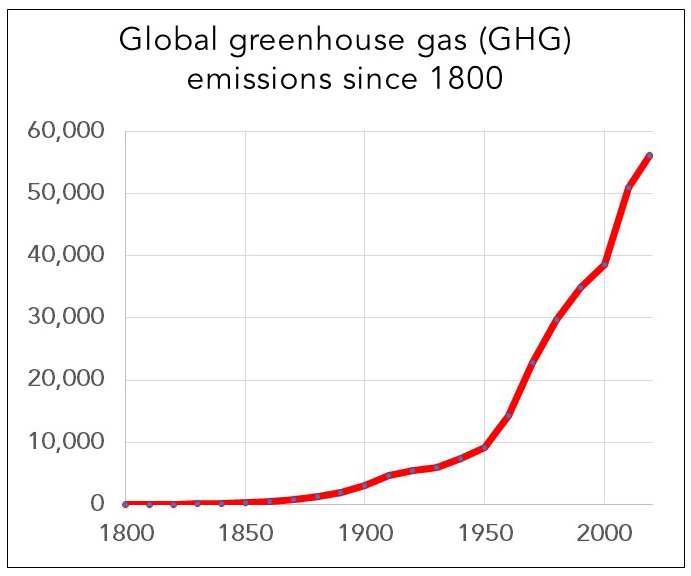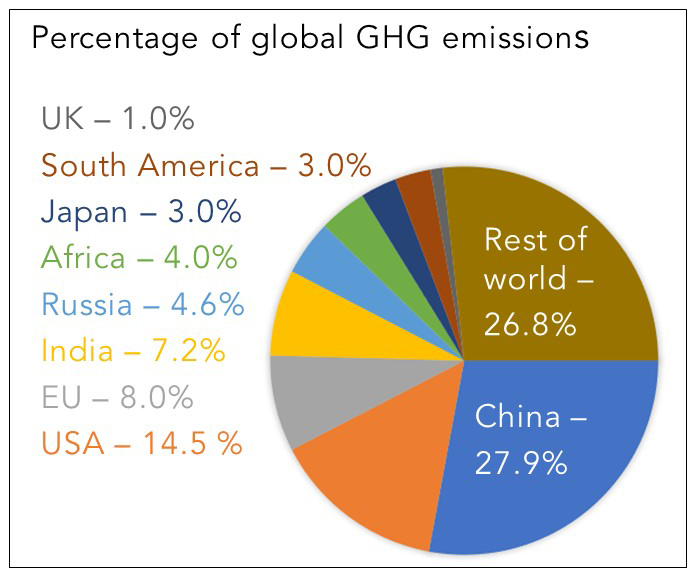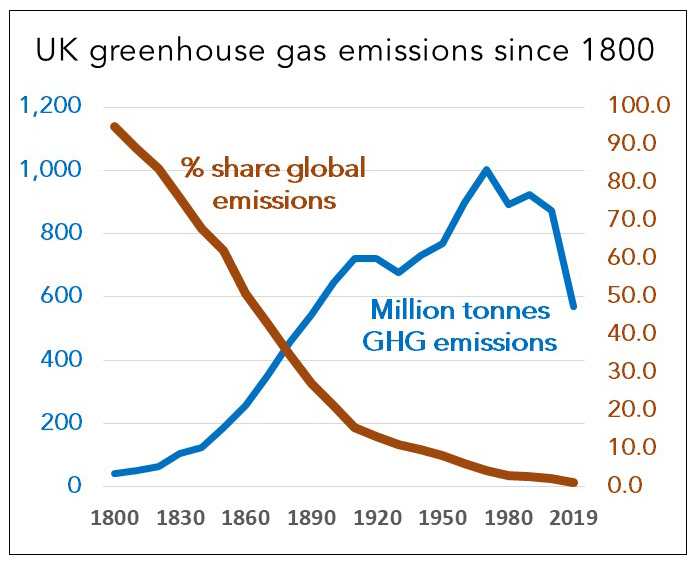In 1994, 196 countries and the European Union signed the United Nations Framework Convention on Climate Change (UNFCC) treaty. Since then, an annual Conference of the Parties (COP) has been held to discuss the implementation of this treaty. Perhaps the most notable of these was COP21 which resulted in the legally binding 2015 Paris agreement which commits parties to take action to avoid global average temperatures increasing by 2°C.
It was not possible to hold COP26 in Glasgow last year as originally scheduled, and so the city is to host the conference between 31 October and 12 November this year. At this is the first climate conference to review the terms of the Paris Agreement, the expectation and hope is that world leaders will then agree more demanding measures to limit global temperature rises to 1.5°C.
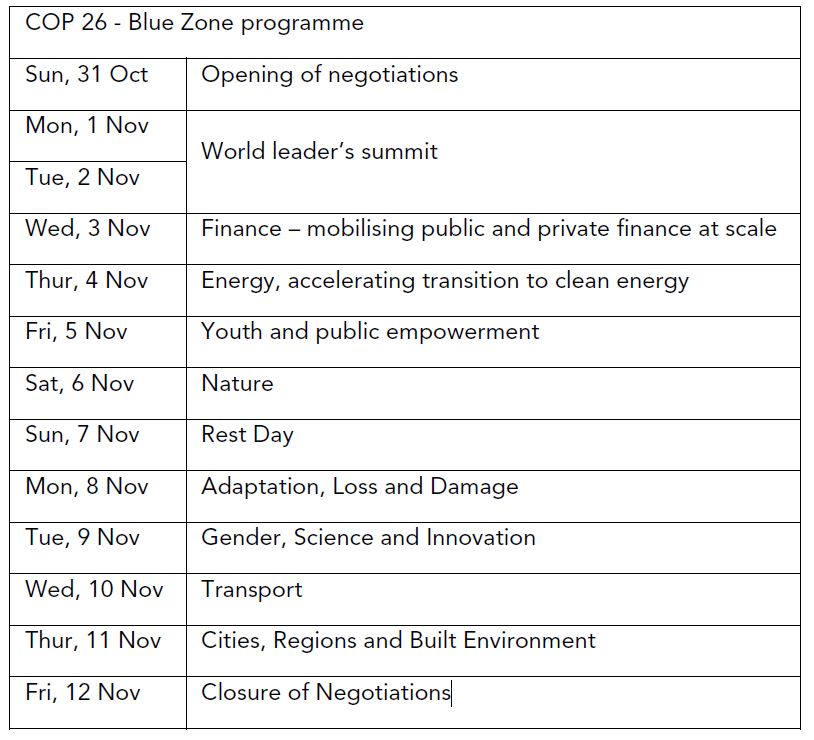
The COP26 website warns that a 2°C temperature increase would result in widespread and severe impacts on people and nature. A third of the world’s population would be regularly exposed to severe heat AND all warm water coral reefs would be destroyed. Arctic sea ice would melt entirely at least one summer per decade and irreversible loss of ice sheets in Greenland and Antarctic cannot be ruled out, leading to several metres of sea level rise over centuries to come.
At 1.5°C, the impacts would be serious but less severe. There would be lower risks of food and water shortages, lower risks to economic growth, and fewer species at risk of extinction. Threats to human health would also be lower.
The COP climate change conferences are among the largest international meetings, globally. They involve complex negotiations between governments and involve officials from every country in the world. Activity at a COP takes place in two different zones – the Blue Zone and the Green Zone. In the Blue Zone, delegates from countries meet for both formal negotiations and informal consultations. The Green Zone is for the general public, for whom there will be a wide range of events including exhibitions and demonstrations of technology.
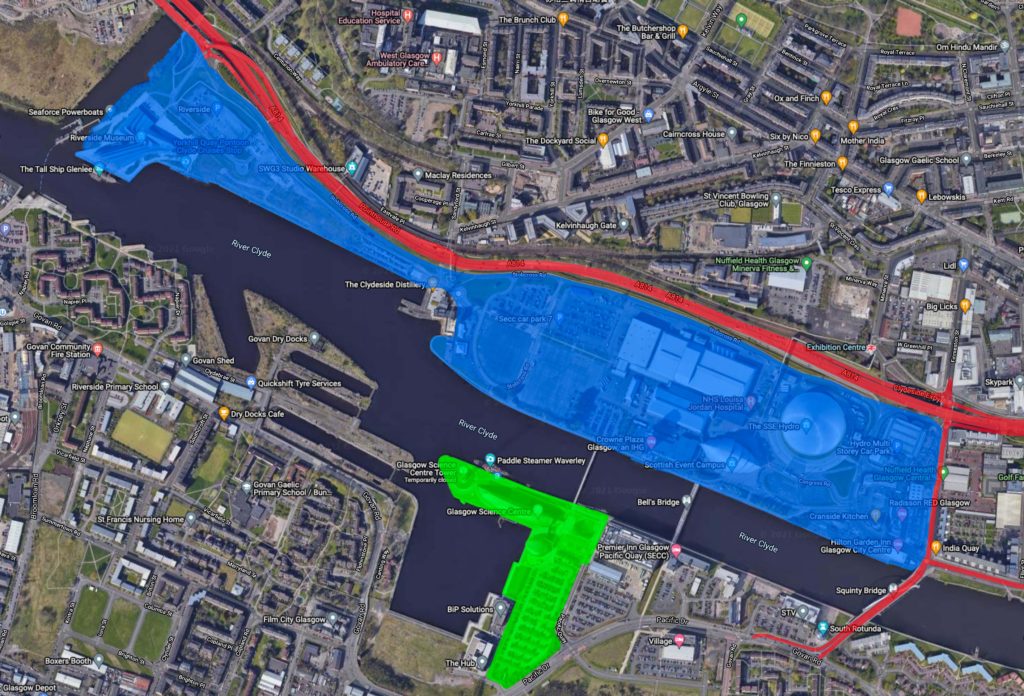
Fortress SECC
COP26 is likely to be the largest ever gathering of world leaders in the UK. Security is therefore paramount especially as it is expected that 25,000 people will attend COP26 with up to 12,000 there at any one time participating in the programme of events shown in the table (left).

Most of these individuals will be involved in the negotiations at the conference which will take place at the Scottish Exhibition and Conference Centre (SECC), built on the site of Glasgow’s docklands. This occupies an area stretching about a mile along the River Clyde. At its widest, the COP26 site is 300 yards wide.
From a security standpoint, it helps that the site is bounded on its southern and eastern sides by the Clyde and Kelvin rivers and to the north by the Clyde Expressway which, for security reasons, is to be closed during COP26 and for a week beforehand. It is one of many roads in the area to be shut during the conference.
Green Zone events will take place in a much smaller area around the Glasgow Science Centre on the south side of the Clyde. Glasgow City Council has found it difficult to accommodate requests for public events during COP26, due, in part, to the limited capacity of this Green Zone.
As of mid-September it was difficult to find information about Green Zone activities. The main public event would seem to be the sustainable Innovation Forum organised by Climate Action, a group set up in 2007 to build partnerships between business, government and public bodies.
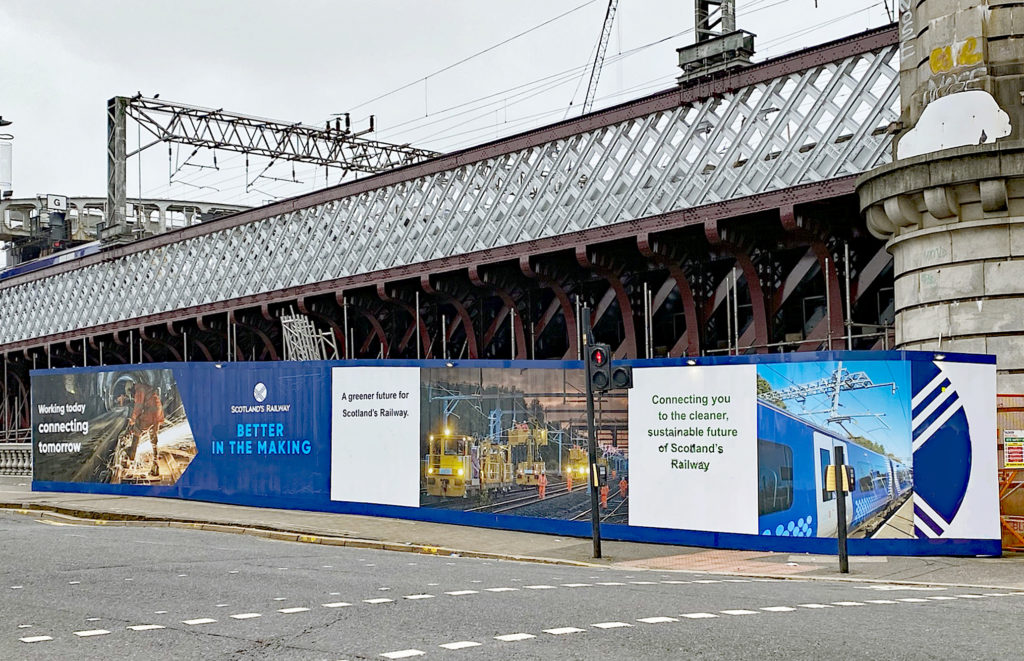
Rail’s participation
COP26 is an opportunity for organisations to highlight their green credentials. Jaguar Land Rover are doing this by providing a fleet of their electric I-PACE sport utility vehicles (SUVs), priced from £65,245, for world leaders and delegates to travel to and from COP26.
With the embodied carbon in such large battery-powered SUVs, a far more carbon friendly form of transport for COP26 delegates would be Scotland’s expanding electrified rail network especially as the Exhibition Centre station serves the COP26 site. Yet it is doubtful that delegates will be travelling by train as this station is outside the security cordon formed by the blocked-off Clyde Expressway.
There are however new advertising hoardings by the Glasgow city-centre Clyde bridges proclaiming the sustainable future of Scotland’s Railway. ScotRail’s trains also carry a logo advising passengers that they have bought a ticket for zero-carbon travel. Scotland can proclaim the green credentials of its railways with some justification as the Scottish Government has approved a plan to decarbonise its railway by 2035 as described in issue 190 (May-June 2021). In contrast, the UK Government has yet to authorise any significant rail electrification.
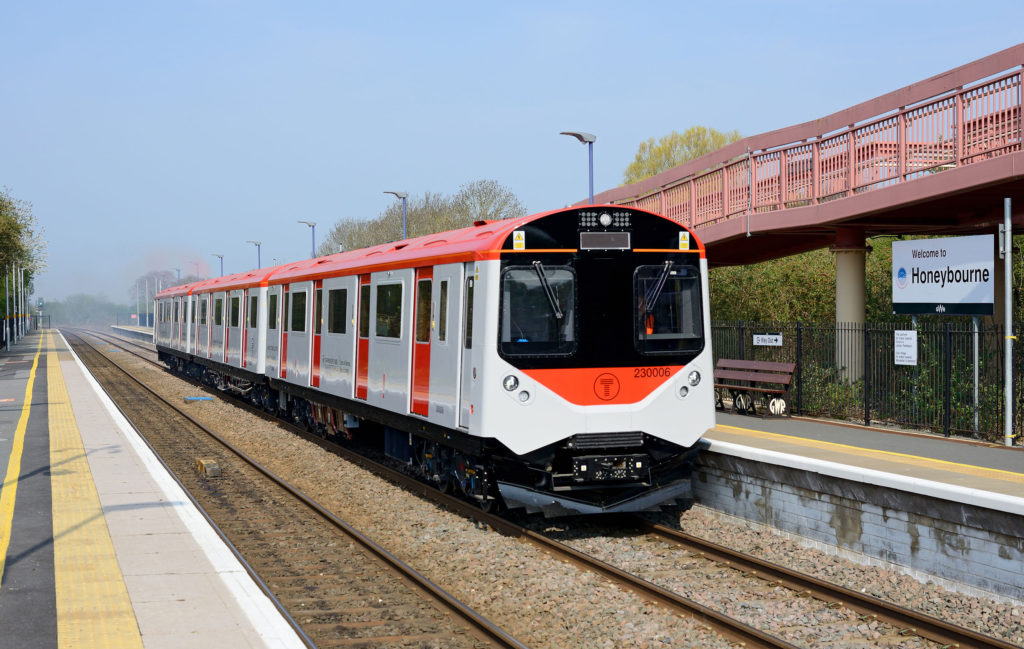
On show in Scotland during the summit will be Vivarail’s class 230 battery train and two hydrogen trains. As described in issue 186 (Sept-Oct 2020), Vivarail’s class 230 battery unit has an innovative fast-charge system and is the only such train authorised for main line operation. In April, a two-car Class 230 unit was shipped to Baltimore to trial a ‘pop-up Metro’ concept on little-used freight lines. With the support of the DfT, Network Rail and Transport Scotland, a Class 230 will operate a demonstration service between Glasgow and Kilmarnock during COP26.
Hydrogen trains
Also coming north for COP26 is Hydroflex, the first hydrogen train to run on the UK mainline network. This is a converted Class 319 inside which hydrogen tanks, fuel cells, traction batteries and control equipment have been installed to produce a demonstration train approved for main line running at up to 50 mph. It is a collaboration between the University of Birmingham’s Centre for Railway Research and Education (BCRRE) and rolling stock solutions provider Porterbrook. Innovation funding has been obtained to develop a production version of Hydroflex capable of 90 mph running with the hydrogen traction equipment mounted underfloor to maximise passenger space.
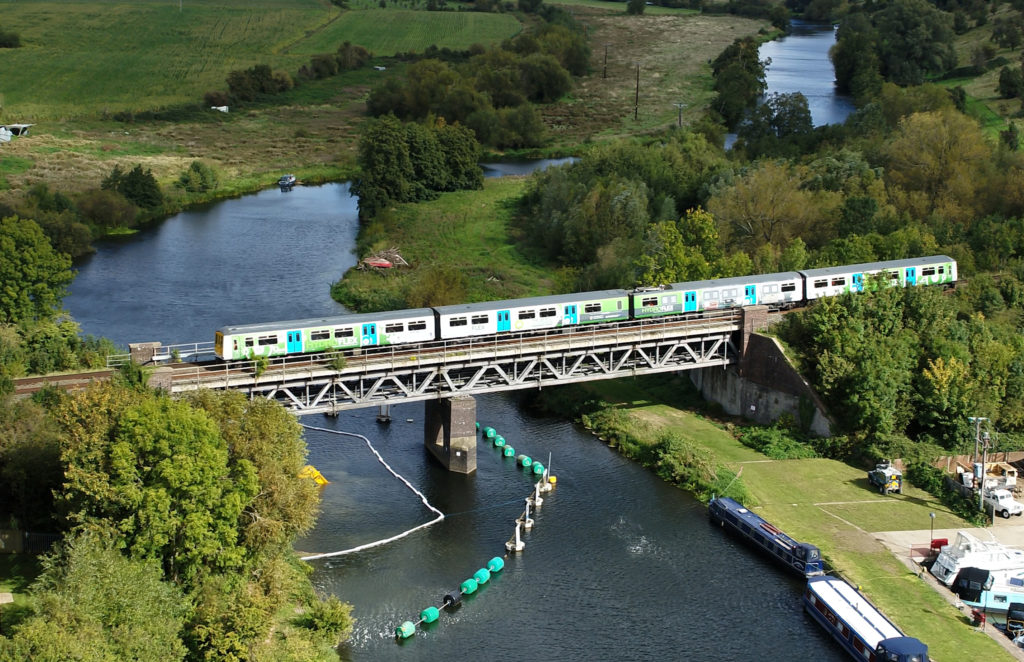
Hydroflex retains the original unit’s DC chopper traction control system and so its developers had the problem of matching the 200kW output of the fuel cell and traction battery to a 1.2MW rated train. This approach however does enable operation as a bi-mode hydrogen / electric unit. For COP26, Hydroflex will be converted to include an onboard boardroom for invited guests.

One possibility is that Hydroflex may be used to transport guests to see the progress with Scotland’s first hydrogen train. As described in issue 188 (Jan-Feb 2021), a consortium led by Arcola Energy are currently converting Class 314 EMU at the workshop of the heritage Bo’ness and Kinneil railway. In May, Angel trains announced it would provide both technical support to this project and green hydrogen refuelling infrastructure costing more than £500,000. The aims of this project include supporting the development of Scotland’s hydrogen economy, developing hydrogen rail traction capabilities, and informing rail policy. Arcola are also supplying Glasgow City Council with a 23-tonne refuse collection vehicle which will be on display at COP26.
The Hydroflex and Scottish hydrogen demonstrator train conversions are quite different. The Hydroflex team separately procured fuel cells, batteries, and hydrogen tanks to operate with the Class 319’s control and traction system. The required system integration, together with approval for main line demonstration running, was no mean feat.
In contrast, the Scottish train is to be powered by an Arcola A-Drive hydrogen fuel cell power train (fuel cell, battery, hydrogen storage, power electronics, thermal management, and motor) on which there has already been 10 years’ development and testing work to integrate and optimise the performance of the fuel cell powertrain systems. These power trains are also currently being installed on buses and bin lorries, including the one on show at COP26. As the Class 314 is receiving a complete power train, including new motors, the system integration is relatively straightforward. One challenge is replacing the class 314’s DC motors with the A-Drive’s much smaller permanent magnet AC motor which required modification of the Class 314 bogie.


When the class 314 was moved to Bo’ness in December it was envisaged that it would be possible to complete the hydrogen conversion in time for COP26 and demonstrate the train by running it on the Bo’ness heritage railway. However, this has not been possible largely due to Covid issues and, in particular, its impact on the supply chain. The plan now is for an exhibition is to be staged at Bo’ness to demonstrate the train’s component parts and show the work done to date. The train is expected to be ready for demonstration runs on the Bo’ness and Kinneil railway next spring.
One hydrogen train that will not be on display at COP26 is the class 600, Alstom’s hydrogen Breeze. This ‘Breeze’ design was unveiled in January 2019 and is a joint development between Eversholt and Alstom to install the iLint hydrogen traction technology in a converted class 321 EMU. Since the iLint entered service in Germany in 2018, Alstom has received a number of orders for these trains. The company has worked with Eversholt and Northern trains on a detailed programme to produce a fleet of hydrogen trains at its Widness plant and operate them from the proposed Tees Hydrogen Hub.
As the iLint has proved itself in service, this oven-ready programme does not require the production of a hydrogen demonstrator train and could provide a fleet of hydrogen trains within four years of an order being authorised. Some commentators predict that such an order might be announced at COP26.

The big picture
Worldwide CO2 equivalent emissions are currently 50 billion tonnes per annum. This is 60% more than in 1960. The UK currently accounts for around 1% of the world’s CO2e emissions, in 1990 it was responsible for 2.6% of all emissions. This reduction reflects the increase in worldwide economic activity since 1990 and that, with de-industrialisation and increased use of renewables for power generation, the UK has reduced its total CO2e emissions by 49% since 1990. In 2019, Britain is estimated to have produced 455 million tonnes CO2e of which rail transport accounted for less than 1%.
These figures show the scale of the problem faced by COP26. They also show Britain is a tiny part of the problem and that delegates are unlikely to be unduly concerned by the emissions from UK rail. Yet it remains important to reduce UK CO2 emissions, including those from its railways.
As the host nation, it is important that Britain can both display its commitment to reducing CO2 and show how this can be achieved. Britain’s railways may be a small part of the problem but can offer carbon savings both by reducing their own emissions and saving carbon from modal shift for other less carbon friendly transport. Furthermore, due to its intensive use of diesel traction, UK rail has a poor carbon record compared with other railways. In 2015, its CO2e emissions were 46 grams per passenger-km, compared with a worldwide average of 18 grams per passenger-km. For freight, Britain’s railways produced 27 grams per tonne-km compared with the worldwide average of 14 grams per tonne-km.
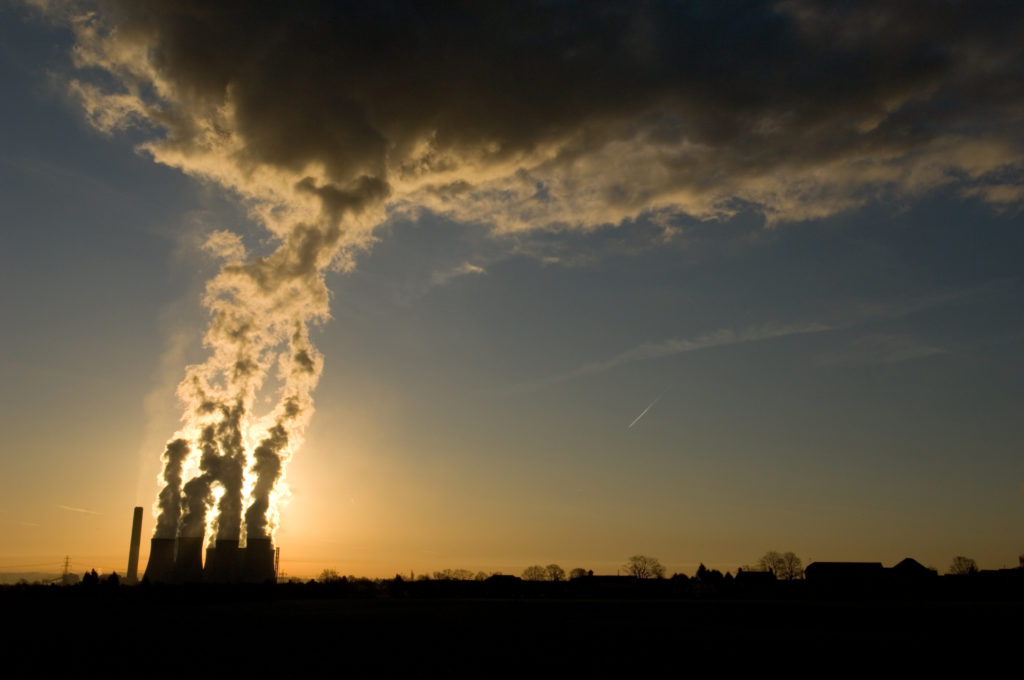
Without doubt, the main focus at COP26 has to be agreeing legally binding commitments to further reduce worldwide CO2 emissions. Those promoting zero-carbon traction and rail electrification at the climate conference may be a side show but are doing the rail industry a valuable service. It is to be hoped that they will be rewarded by the UK Government announcing a firm commitment to rail decarbonisation as COP26’s host country, Scotland, has done.


